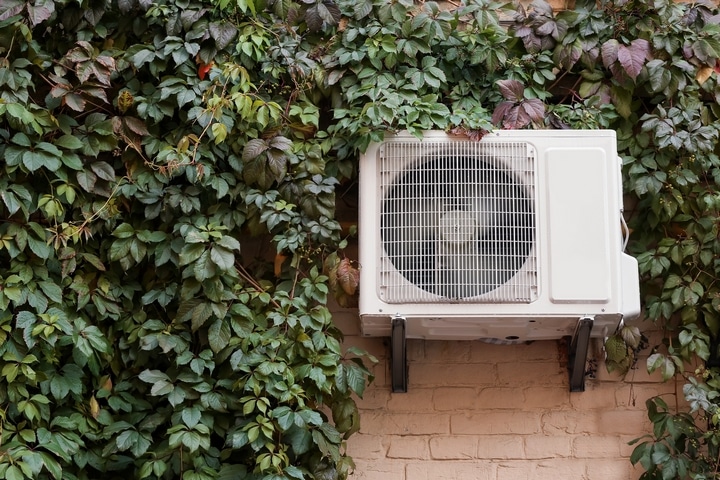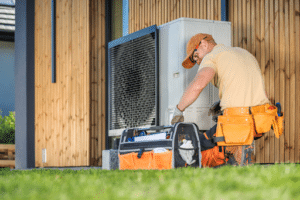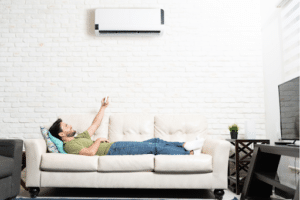The summer season is fast approaching. As the temperature begins to rise, you should make sure your air conditioner is functioning properly in the upcoming weeks. It would be rather unfortunate if you turn on the cooling system during the hot and torrid summer, only to find out that your air conditioning unit doesn’t even work.
Doing regular air conditioner maintenance will reduce the risk of your unit breaking down frequently. It is also advisable to have professional HVAC companies perform the routine check-ups on your behalf. While you may conduct some of these inspections on your own, there are more technical tasks that require the expertise of an air conditioner maintenance crew.
The best time to perform air conditioner maintenance is before the summer season arrives. Summer is naturally the busiest time for HVAC companies, so the air conditioner maintenance and service prices may peak based on the high customer demand. Besides, you want to identify any potential malfunctions as early as possible. By conducting the check-ups earlier, you can fix the problems quickly and settle into the summer season without any worries.
Here are seven air conditioner maintenance tips to ensure your unit is working optimally for the summer:
Tip #1: Cleaning and Repairing the Air Filters

One of the most crucial air conditioner maintenance check-ups is cleaning or changing the damaged air filters. When damaged, the air filter may compromise its ability to filter the air and separate unwanted particles effectively. If the evaporator coil is exposed to dust or dirt particles, its ability to absorb heat is hindered. As such, a faulty air filter could make the entire air conditioner unit lose its functionality.
In some cases, cleaning the air filters can be an easy fix to this problem. However, there could be potential complications that necessitate replacing the air filters altogether. The decision between repairing and replacing the air filters depends on its current physical condition. You can do these checks on your own if you are familiar with the inspection process. Otherwise, hire a professional air conditioning maintenance company if the situation is too complicated for a DIY attempt.
You should fix your damaged air filters as soon as possible. If this is left unattended, the problem can affect other areas of the air conditioning unit, which may complicate repair work. The longer you leave a damaged air filter in the system, the more debris it will accumulate over time. At a certain point, the damage could become so severe that you have no choice but to replace the entire air conditioner.
Tip #2: Cleaning the Air Conditioner Coils

A good air filter keeps the evaporator coil of your air conditioning unit clean. However, these will still accumulate dirt and dust over time. The collected debris will then insulate the condenser coils, which could lower their ability to absorb heat. As a result, the entire air conditioning unit works inefficiently and uses more power to get the desired results.
As you are cleaning the air filters, go the extra mile and clean the condenser coils as well. This will unclog the entire air conditioning system and leave your unit working at optimum levels. As a result, you will avoid extra power costs and future replacement costs.
Tip #3: Clear Debris from the Air Conditioning Unit

During summer, there is a tendency for leaves and dirt to accumulate on the outside of the air conditioning unit. The debris eventually finds its way into the air conditioner, which compromises the efficient function of the internal components.
When this happens, you should clear the debris on the outside of the unit. Since some of the debris may have seeped into condenser, you should also gently clean the air conditioner’s fins. Cleaning the fins at a 45-degree angle with a water hose is the recommended method. You should avoid cleaning the fins with a power hose, since the impact may cause damage to the delicate interiors of the unit.
To minimize the amount of debris from accumulating, you should trim and prune any shrubs growing near the air conditioner. If possible, avoid placing the air conditioner unit near any trees so that the leaves are less likely to fall into the system.
Tip #4: Straightening the Coil Fins

The condenser coils and evaporator’s aluminum fins can easily get bent over time. This restricts the flow of air through the air conditioner and may eventually block the system. If left unattended, this could become a costly neglect because the bent coil fins will render the air conditioner unit useless.
Straightening the coil fins is a practical solution to this problem. It’s a simple enough procedure with the help of a condenser fin comb. However, you should still be gentle in applying a moderate amount of pressure on the coil fins.
Tip #5: Clear the Drains

The optimal functionality of your air conditioner is affected by clogged drains. Congested pipelines compromise the ability of the air conditioning unit to effectively remove humidity from the air. This may cause staining on floors and carpets if the problem persists for too long.
You should work to unclog the drain lines in your air conditioner. This can be done by passing a stiff wire through the drains or blowing out the drain with pressurized air, which decongests the pipes and allows air to flow freely through the air conditioner system.
Tip #6: Checking the Coolant Lines

The pipes that run from the air handler to the evaporator are mainly covered with insulating material, which allows them to retain as much energy through the pipes as possible. Checking the pipes for vulnerabilities could result in substantial savings in energy costs.
You can quickly address the sections of the pipes where the insulating material has deteriorated by installing foam insulation sleeves on the affected areas. The insulation helps to ensure the temperature in the lines are maintained and the humidity around the lines will not condense and create water damage. This is essential for the entire air conditioning system to work efficiently.
Tip #7: Checking the Thermostat

In some instances, you may assume the air conditioner isn’t working optimally, but the actual issue could just be a broken thermostat. Just in case, you should examine the thermostat and ensure that it is working correctly. If you are using the old mechanical gadgets, you are better off upgrading to a newer programmable model.
The modern thermostats allow you to input pre-set room temperatures, which automatically change depending on whether people are inside or outside the room. The thermostat can also be pre-set in such a way that it starts cooling the house for a couple of minutes before you arrive home. This way, you get to go home to a cool environment customized to your preference.



